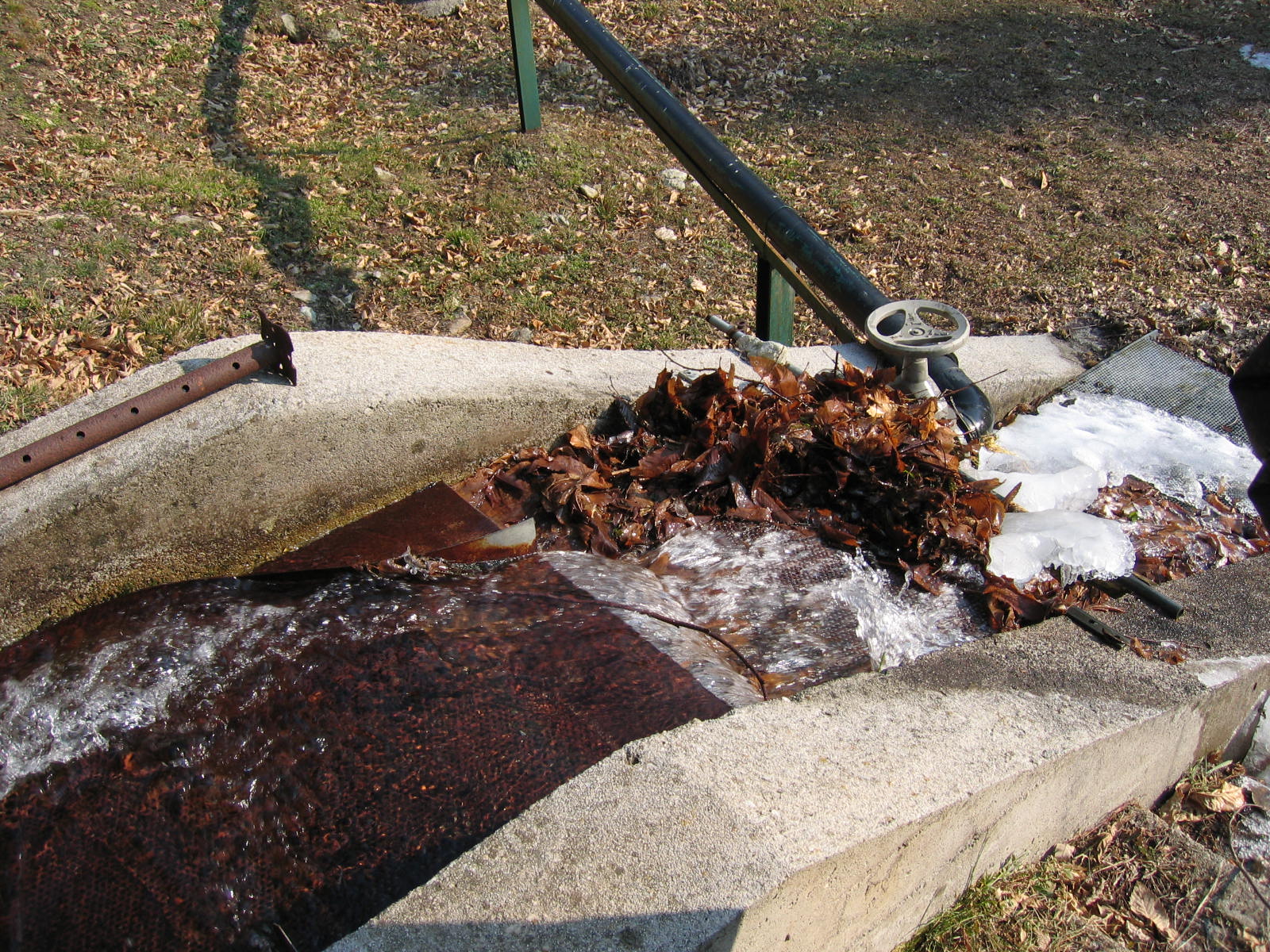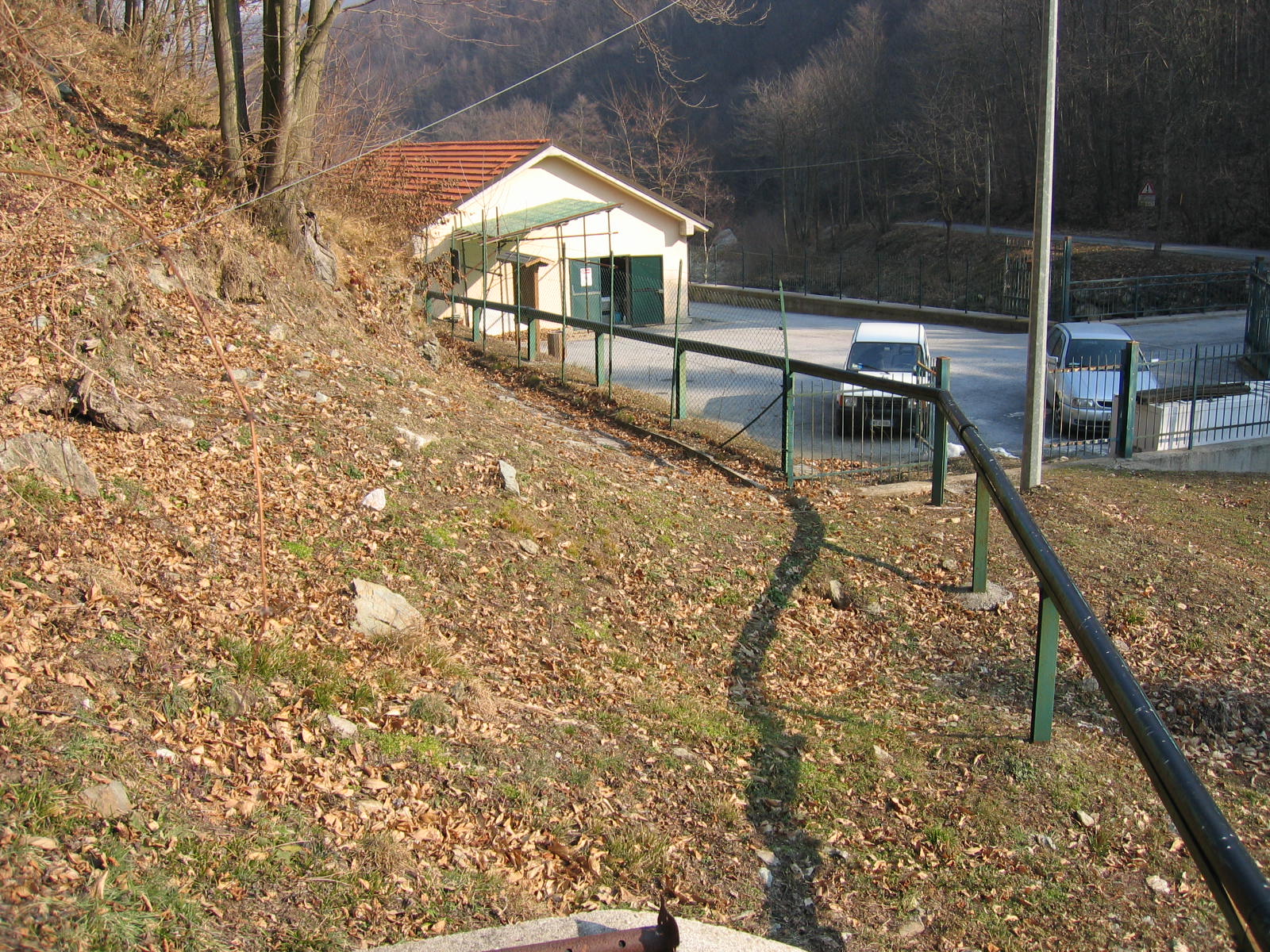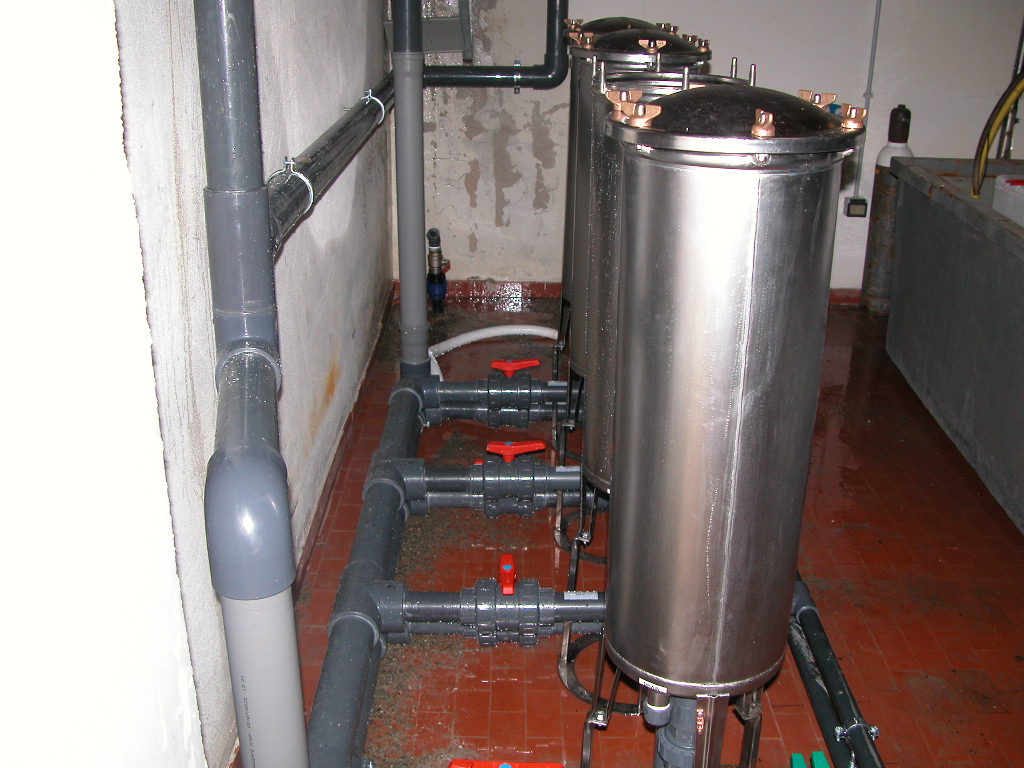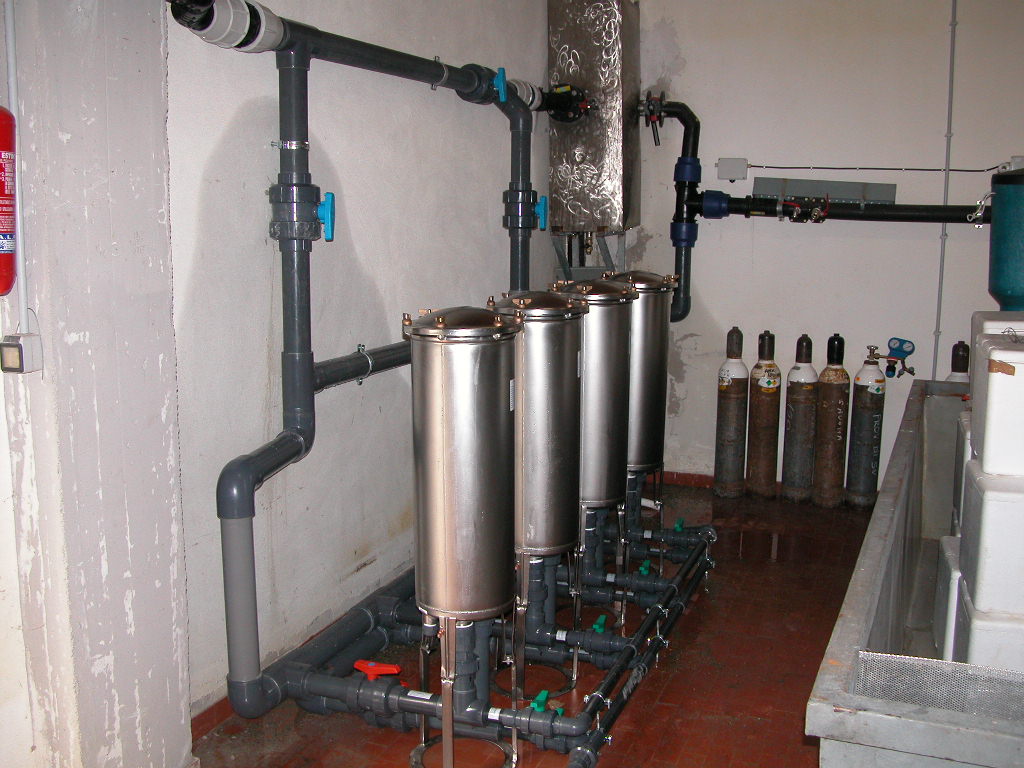At an ichthyogenic plant for the breeding of trout fry, we designed and built an in-line filtration system for stream water. The purpose of the plant is to ensure constant repopulation of the fish species in the streams and rivers in its area of expertise.
The water supply used in the tanks for incubation and growth of the fry is provided by simple downpour from the stream that flows near the plant, with a deviation channeled in the open air in a concrete conduit that takes it to the tanks.
Before being piped and reaching the tanks themselves, the flow of water supplied from the stream undergoes a summary screening that provides, (even if not completely) for the elimination of the residues transported by the flow.
Unfortunately, during and after periods of heavy rain, the stream brings with it a whole series of turbidities that cause a significant mortality of the fry.


To overcome this problem, a filtration system was designed to be placed between the collection of the stream water and the tanks in order to reduce the turbidity present and above all, eliminate all those suspended microparticles harmful to the species.
From the point of intake of the stream to the fish breeding plant, there is no significant difference in height that allows obtaining a certain pressure at the inlet to the water treatment plant.
The flow rate itself is not of great volume, which is why we were forced to use cartridge filters with a large treatment surface in order to reduce the pressure losses to a minimum and therefore, guarantee the flow rate of water necessary to feed the incubator tanks.
The water treatment plant consists of no. 4 AISI 304 stainless steel cartridge filters with a 300 micron filtration degree and a nominal flow rate of 45.000 l/h for each unit.


Despite the evident technical inadequacy of the water collection from the stream, the filtration system installed managed to obtain a good level of operational efficiency ensuring a drastic reduction in fry mortality.